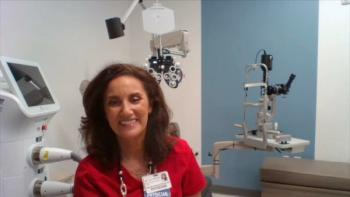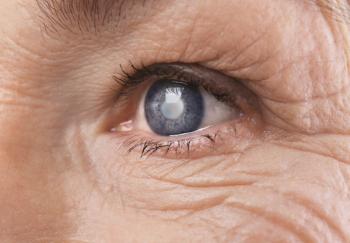
Ophthalmology
Latest News
Latest Videos

CME Content
More News

An AI segmentation system was able to identify changes in retinal segmented features based on optical coherence tomography (OCT) images.

Treating and preventing correctable vision impairments could prevent up to 19% of dementia prevalence, according to a new study.

Primary care clinics in underserved areas including eye disease detection programs could reduce vision loss in the US.

A new study has found that prior authorizations for anti–vascular endothelial growth factor treatment led to a delay in patient care for most patients.

Mina Massaro-Giordano, MD, discussed the ways that dry eye can affect patients with the condition, as well as what symptoms can fly under the radar.

Patients with age-related macular degeneration, diabetic macular edema, and macular edema following retinal vein occlusion can use faricimab-svoa as a prefilled syringe (PFS).

Adult patients with dry eye revealed their different challenges and experiences when living with the disease.

Patients with dry eye disease can be distinguished from patients with healthy eyes using a new artificial intelligence tool.

Incidence of postoperative endophthalmitis was low when patients were treated with either 1% povidone iodine disinfection with intracameral antibiotics or 5% povidone iodine with antibiotics.

A panel of ophthalmologists defined points of consensus for suprachoroidal space injections based on current published evidence.

Expanding ways to treat eye pain could reduce the burden on the emergency department (ED) and other areas of the health care system.

Associations between ambient air pollutants and dry eye could have been mitigated during the pandemic.

An aflibercept dose of 4 mg for macular degeneration was found to reduce both central macular thickness and pigmental epithelium detachment for a longer duration compared with the 2 mg dose.

The FDA approved the first 2 biosimilars referencing aflibercept (Eylea). However, patent litigation has left it unclear when the biosimilars will come to market.

An intravitreal ranibizumab injection was able to improve retinal sensitivity and thickness along with improving visual acuity.

Density loss in the optic nerve head capillary could lead to a faster rate of visual field progression as well as an increased risk of developing event progression.

Models that are code-free were able to perform as accurately as expert-designed bespoke models when classifying retinal pathologies.

Findings from a study with a limited sample size suggest that patching is both effective and does not impede development in children who patch for at least 120 minutes each day.

Poor mental health was worse in adults with strabismus compared with adults without strabismus.

Digital technology being less accessible to adult patients with vision impairment (VI) could be a detriment to telemedicine accessibility.

The subretinal drusenoid deposit form of age-related macular degeneration (AMD) was found to be associated with valvular heart disease as well as cardiac index.

A real-world safety study found that patients treated with brolucizumab had low occurrences of intraocular inflammation, retinal vascular occlusion, and retinal vasculitis.

Polygenic risk score was found to be associated with a higher risk of primary open angle glaucoma (POAG) in patients with ocular hypertension.

A review found that global retinal sensitivity changes in mesopic and scotopic lighting were significant in age-related macular degeneration (AMD).

A deep learning model may be able to outperform ophthalmologists in predicting neovascular age-related macular degeneration (nAMD) recurrence.



















































